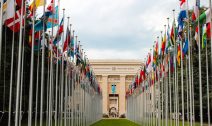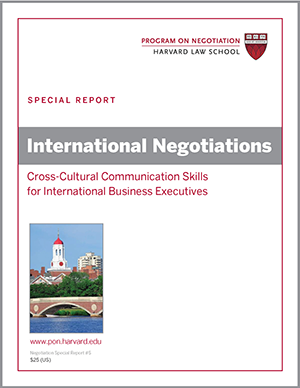
In 2020, grounded by the Covid-19 pandemic, international diplomats accustomed to traveling from capital to capital found themselves stuck in a never-ending stream of videoconferences. To take a number of diplomacy examples, the G7, the G20, the International Monetary Fund, and the World Bank all met online, reduced to tiny faces on a screen. The new constraints facing diplomats have hindered dealmaking, even as it was needed more than ever. But, as we’ll see, the same constraints also led diplomats to make changes that may prove useful to cross-cultural negotiations in the long term.
Diplomatic Difficulties
As diplomacy examples suggest, virtual negotiations required difficult adjustments in the early months of the pandemic. The United Nations Security Council was widely criticized for lagging behind other international bodies in addressing the pandemic, with some blaming the inability to meet in person for delays. Russia initially blocked the group from making decisions online, which resulted in “a crazy system of sending signed letters by email to vote instead of raising our hands online,” Estonian Ambassador Sven Jürgenson grumbled to Politico in April.
Ashok Mirpuri, Singapore’s veteran ambassador to the United States, complained to Politico that although online negotiations allowed a wider audience to monitor talks, they lacked the “cues and nuances” that enable trust building and the sharing of confidences.
“There isn’t the same pressure to compromise you would experience if you were in the same room,” Martin Weiss, Austria’s new ambassador to the United States, said to Politico about video negotiations. “It’s easier to hide behind your own screen.” And after her first European Union video summit on March 26, German chancellor Angela Merkel said she preferred “walking around the table” to find out if a proposal was popular enough.
Another downside illuminated by these diplomacy examples: “delegations from the developing world are underrepresented in virtual gatherings,” writes Marciela Muñoz writes for the nonprofit DiploFoundation. Their resources and attention stretched thin by the pandemic, most governments have devoted less attention to international negotiations, and some lack access to the technology needed to engage with counterparts abroad, according to Muñoz.
As a result of these and other challenges, by September, “not a single major diplomatic breakthrough has been observed” during the pandemic, writes Carnegie Europe senior fellow and diplomat Pierre Vimont.
Virtual Diplomacy: How Less Became More
But the switch to virtual negotiations hasn’t been all bad for diplomacy. As they gradually adapted to negotiating on Zoom and other virtual formats, diplomats, like all of us, found some silver linings to online negotiations.
- More time to talk. With international travel off the table, many diplomats found they had much more time available to connect with counterparts abroad. “Time was reinvented as an affordable resource,” according to Vimont. “And many diplomatic activities were revealed for what they were: dispensable.” Diplomats learned that they could often move conversations forward without the need for time-consuming and expensive travel and formalities, such as elaborate social events.
- More connections at the local level. With national officials unable to travel, bilateral visits and meetings tapered off. In their place, “local representatives thrived” in 2020, according to Vimont. “Staff on the ground are now seen as a useful asset for solid and accurate assessments,” becoming “natural intermediaries between home office and field.” As a result, he writes, the quality of preparations for high-level virtual talks improved.
- More variety in negotiation format. As we’ve noted, during the pandemic, many diplomats have found digital formats proved to be a poor substitute for in-person meetings. The “personal contacts, interruptions that allow sideline conversations, and informal gatherings during coffee breaks” that grease the wheels of diplomatic dealmaking became unavailable and greatly missed. Turning to real-world diplomacy examples, the European Union launched talks regarding a massive financial recovery plan digitally. But when “push came to shove and collective negotiations were required,” according to Vimont, European leaders traveled to Brussels, where—adopting coronavirus safety precautions—they “rapidly resumed their traditional haggling marathons.” Such experiences highlight that different types of diplomatic negotiations can be tailored to different negotiating formats.
All of these lessons learned from pandemic-era constraints on diplomatic dealmaking could carry over to post-pandemic negotiations and also inform international business negotiations. Ideally, in the future, diplomats and other negotiators will approach decisions about whether to meet online or in person more thoughtfully and make better use of multi-track diplomacy.
What negotiation lessons have you absorbed from diplomacy examples during the pandemic?






very nice review. in the months and years to come hopefully diplomacy will catch up to the innovative and agile forms negotiation has taken online in the nonprofit, social enterprise and business world. one aspect where digital diplomacy has surely lacked behind is in digital trust building. the observation that trust building is harder online is not new; what is new is deliberately opting for new methods, through multiple online channels, to catch up on the trust gap rather than assuming that it is cannot be changed